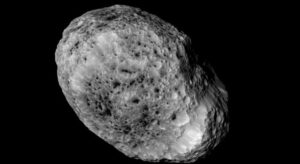Welcome to the 183rd Carnival of Mathematics. The Carnival is a monthly post, hosted by a different maths blog each month, collecting interesting mathematical content from all over the internet.
First up, we look at the number of this carnival, the number 183 – with thanks to Wikipedia https://en.wikipedia.org/wiki/183_(number)
- 183 is an odd number
- 183 has 4 divisors: 1, 3, 61, 183
- 183 is a central polygonal number
- 183 is a composite number
- 183 is a deficient number, as 65, the sum of its proper divisors, is less than 183
- 183 is a perfect totient number equal to the sum of its iterated totients
- 183 is a repdigit number in base 13 (111)
- 183 is a semiprime number, (also called biprime, or 2-almost prime, or pq number), a natural number that is the product of two prime numbers
- 183 is a square-free number
- 183 is the difference of 2 square numbers: 322 – 292
- 183 is a number of points in projective plane over the Galois field GF(13)
- 183 is a 62-gonal number
And, as a final word on the number 183, famous mathematician, Alan Turing, was featured in Time Magazine’s Volume 183 in January 2014. Co-incidence? Probably.
Now onto blogs and news this month.
On Twitter, Richard Perring poses a counter-intuitive question about perimeters. Do you find yourself estimating the perimeter relative to the area of the piece when you look at his image?
Thinking about puzzles in a different way has resulted in the Rectangular Peg Puzzle, first posed in 1911 by German mathematician Otto Toeplitz. The inscribed square problem, in which he predicted that “any closed curve contains four points that can be connected to form a square,” was solved using klein bottles by two prominent mathematicians, Joshua Greene and Andrew Lobb. Popular Mechanics has the long story, with some fabulous images to explain the problem and solution. [ed. Despite the article’s title, this math problem was only partially solved as explained by David Epstein & Sam Torres below in comments ] https://www.popularmechanics.com/science/math/a33002042/geometry-problem-solved/

Moving from klien space to ‘real’ space, James Arthur has written an article on Saturn’s moon Hyperion. The first non-round moon found has a chaotic rotation. James uses maths equations and graphic plots to demonstrate the challenges with dynamical systems. http://alephjamesa.co.uk/2020/06/hyperion-chaos/
And NASA announced in June that the agency’s headquarters building in Washington, D.C., will be named after Mary W. Jackson, the first African American female (ed. Mathematician then) engineer at NASA.
Mary graduated in 1942 from Hampton Institute with a dual degree in math and physical sciences. She became a math teacher at Calvert County, Maryland. She later worked as a bookkeeper and started a family before her aerospace career would take off.
In 1951, Jackson was recruited by the National Advisory Committee for Aeronautics, which in 1958 was succeeded by NASA. She started as a research mathematician who became known as one of the human computers at Langley. She worked under fellow “Hidden Figure” Dorothy Vaughan in the segregated West Area Computing Unit.
https://www.nasa.gov/press-release/nasa-names-headquarters-after-hidden-figure-mary-w-jackson
Dr Nira Chamberlain, President of the Institute of Mathematics and its Applications asks what challenges does the death of George Floyd pose to the Mathematics community. In his regular diary, Dr Nira Chamberlain reflects on this question and talks about his own experience as a Black Mathematician as well as a possible way to move forward. 4th June 2020
Meanwhile at Princeton honour’s William Massey, who became the first black mathematician to receive tenure at an ivy league university back in 2001. The article cover’s Massay’s career, as a leading mathematician and ‘inventor’ of CAARMS – Conference for African American Researches in the Mathematical Sciences in 1995
Thus ends the 183rd Carnival of Mathematics. No doubt there are many other worthy blog articles that were published in June 2020. Please comment below any other that you love.

The Toeplitz inscribed square problem was not solved. It was long long known for smooth curves and unknown for nastier curves; the new result does not change that. It is on a variation of the problem for rectangles of given aspect ratio and for smooth curves only. I have had to participate in fending off many would-be Wikipedia editors who all misunderstood this because of their misreading of the Quanta article. Please fix instead of propagating this misinformation.
Hi David,
Thank you for taking the time to comment. Have you read the recent article at Popular Mechanics? They clearly claim the problem has been solved by two young mathematicians.
Perhaps you could take the time to share with us both your credentials and where they have failed to solve the problem?
We would be more than happy to publish an update/correction with fully detailed information.
Stay well 🙂
Thanks for your great posts, but David is correct here. I have read the Popular Mechanics article and it states that Greene and Lobb have solved “a variation of the age-old geometry problem.” In addition, the abstract of their arXiv paper (link: https://arxiv.org/abs/2005.09193), clearly states that their result applies to “every smooth Jordan curve,” so they did not solve the problem in the case of non-smooth curves. Still, this is an interesting result and I’m happy to see it mentioned here.
I don’t think the question of credentials is particularly important here, but David is a professor of computer science at UC Irvine who has worked in computational geometry. This may be seen on the blog linked to by the name of his comment.
Cheers, keep up the posts, and stay safe!
Thanks for the clarification Sam, this will help our readers.
Pingback:Carnival of Maths 183 | The Aperiodical